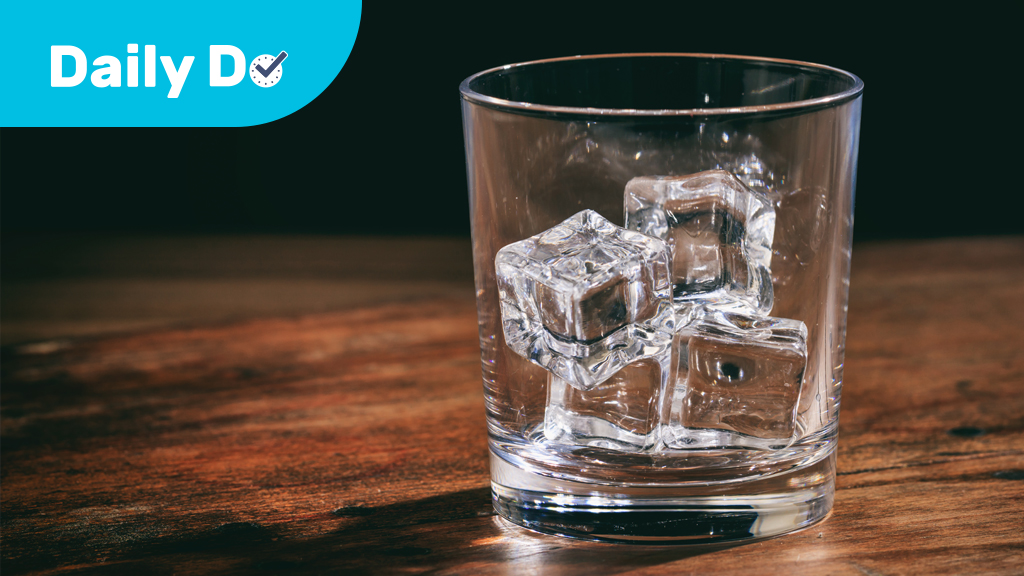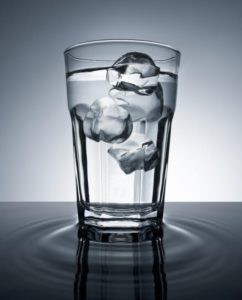Informal Education | Daily Do
What Happened to Our Ice?

Disciplinary Core Ideas Is Lesson Plan NGSS Phenomena Physical Science Science and Engineering Practices Informal Education
Sensemaking is actively trying to figure out how the world works (science) or how to design solutions to problems (engineering). Students do science and engineering through the science and engineering practices. Engaging in these practices necessitates that students be part of a learning community to be able to share ideas, evaluate competing ideas, give and receive critique, and reach consensus. Whether this community of learners is made up of classmates or family members, students and adults build and refine science and engineering knowledge together.
Introduction
In today's Daily Do, What happened to our ice?, families participate in a Dinner Table Discussion (see below) about the phenomenon of melting ice. This sensemaking discussion has four parts:
- Families raise the question "What happened to our ice?" by introducing the phenomenon of melting ice. Students and their families observe and/or taste liquids, making careful observations of how and why the liquids change before and after ice melts.
- Families ask students to explain what they currently understand about how and why they think ice melts.
- Families prompt students to generate questions about how and why ice melts.
- Families read an article and do an activity together to find some answers to their questions about how and why ice melts.
If this is your first Dinner Table Discussion in the Daily Do series, NSTA recommends reading the guidance before trying your first family discussion.
What Happened to Our Ice?

Introducing the Phenomenon and Raising the Question
There are two options for introducing this phenomenon:
- Pour soda, or another liquid like lemonade, into a glass and allow ice to melt in it. Pour the same liquid, without ice, into another glass. Have your child taste the contents of each glass, and ask them leading questions such as these:
- What do you notice about the taste difference between the two?
- What do you notice about the appearance of the liquids?
- What do you think is different about the two liquids? How do you know?
- Ask your children to observe a glass of ice water (or a clear cup) (roughly 1/3 ice and 2/3 water). Ask them to observe it again approximately 30 minutes later. Ask leading questions such as these:
- How have the contents in the glass changed in the last 30 minutes?
- Why do you think those changes occurred?
- How do you know?
Tell Us What You Know....
Encourage your children to explain to you what they know (or think they know) about why ice melts. Ask them to “explain the science of why ice melts.” Children will attempt many varieties of explanations, but our goal here is not to distinguish between right versus wrong answers or ideas. Rather, we want to foster discussion about the “how” and the “why” of water changing from a solid (ice) to a liquid (water).
Accessing Prior Knowledge
Students may also draw on knowledge from previous grade levels during this part of the discussion.
- Kindergarten and first-grade students may mention that all matter has properties, and those properties can be observed.
- Second-grade students may mention that different kinds of matter exist and can be either solid or liquid depending on the temperature.
- Elementary students (grades 3–5) may mention heating or cooling a substance can cause changes that can be observed. Sometimes these changes are reversible, and sometimes they are not.
- Middle or high school students may include that no matter what change in properties occurs, the weight doesn't change. A more sophisticated version of this explanation could sound like this: "Matter cannot be created nor destroyed; it can only change forms."
All of these connections to ideas and learning opportunities at previous grade levels should be encouraged by asking follow-up questions such as these:
“Can you tell me more about that?”
“How do you know that?”
You can say something like this: “It sounds like we have more questions than answers. What questions do you have about how and why ice melts?” Encourage children to ask as many questions as possible that are relevant to the discussion.
Common questions could include these:
-
Where did the ice go?
-
What does ice turn into?
-
Is ice the same thing as water?
-
Where does the water on the outside of the glass come from?
-
Can you turn other liquids besides water into ice ?
Pursuing Common Questions
Read the Scientific American article "What Makes Ice Melt Fastest?" (as a family or individually), and complete the extension activity, if you so choose. High school students can engage in this activity independently. Younger students will need more assistance. After reading the article and completing the activity, ask your children the following questions:
-
What is one new thing you learned that you didn’t know before?
-
Which of our original questions did we answer in our discussion and by reading the article?
-
What other questions do you have about phase change (how things turn from solid to liquid, liquid to gas, liquid to solid, etc.)?
NSTA Collection of Resources for Today's Daily Do
NSTA has created a What happened to our ice? collection of resources to support teachers and families using this task. If you're an NSTA member, you can add this collection to your library by clicking Add to My Library, located near the top of the page (at right in the blue box).


